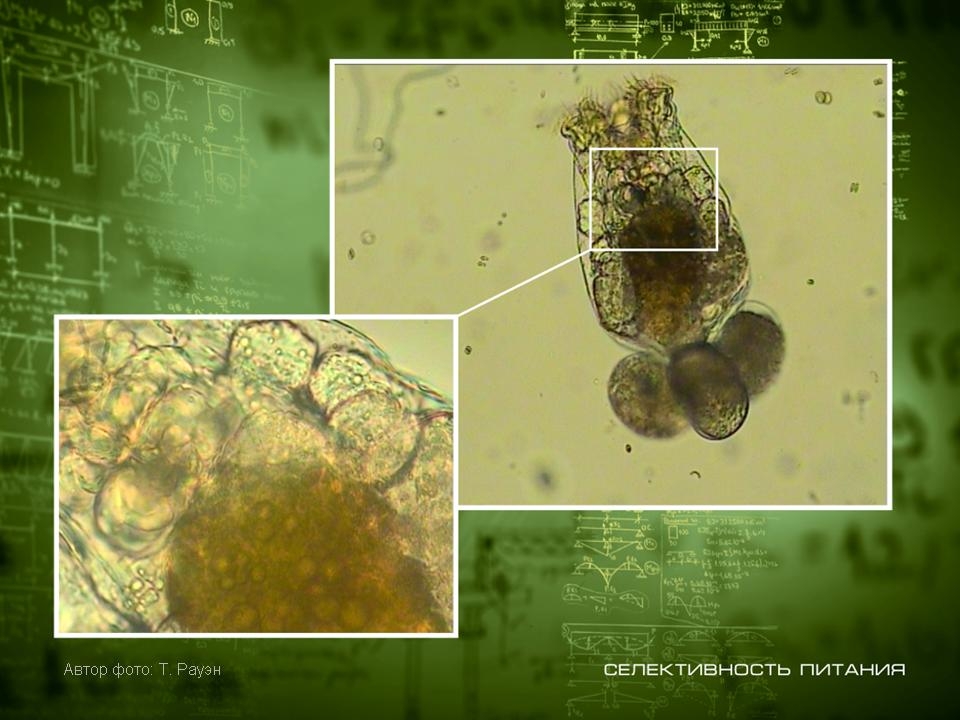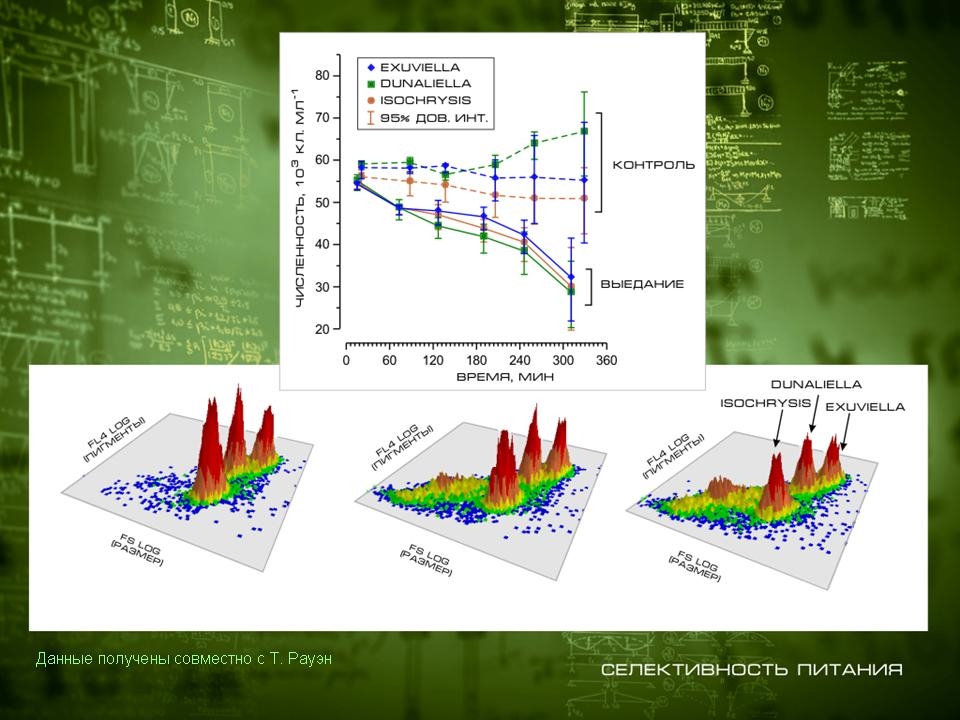 Selective grazing by rotifers on microalgal mixtures: a flow cytometry study
Selective grazing by rotifers on microalgal mixtures: a flow cytometry study
The rotifers Brachionus plicatilis are able to grow very fast in a culture when they feed on microalgae (Fig. 1). If they are provided a mixture of different species of microalgae as a food source, they prefer one prey species to another (see Video below). Such a selectivity in their feeding can be efficiently studied by flow cytometry. Tatiana Rauen (Dept of Mariculture and Applied Oceanology, IBSS) and Vladimir Mukhanov (Dept of Plankton, IBSS) used this approach to identify and count microalgal cells belonging to different species in their mixture. For this, a number of microalgal species were chosen (in this example - Exuviella, Dunaliellaand Isochrysis), which produce distinct clusters well-isolated from each other on cytograms (Fig. 2). As the rotifers grazed on the microalgae, the size of the clusters decreased and, hence, the rate of grazing by the rotifers on every algal species could be calculated precisely. The same microalgal mixture but without the predators was used as control. It is remarkable that as the rotifers fed on the microalgae, the medium was filled with damaged cells and their debris (i.e. detritus). On the cytograms, it was manifested as additional, growing in size cluster (recognize it in Fig. 2).

Fig. 1. Microalgae in a rotifer's gut (Photos by Tatiana Rauen).
Video. Watch intently how a rotifer ingests one algal cell and rejects another (Video by Tatiana Rauen).

Fig. 2. The microalgal clusters decrease in size over time as the rotifers feed on the three microalgal species. On the contrary, the detrital cluster grows with time (data provided by Tatiana Rauen and Vladimir Mukhanov).


